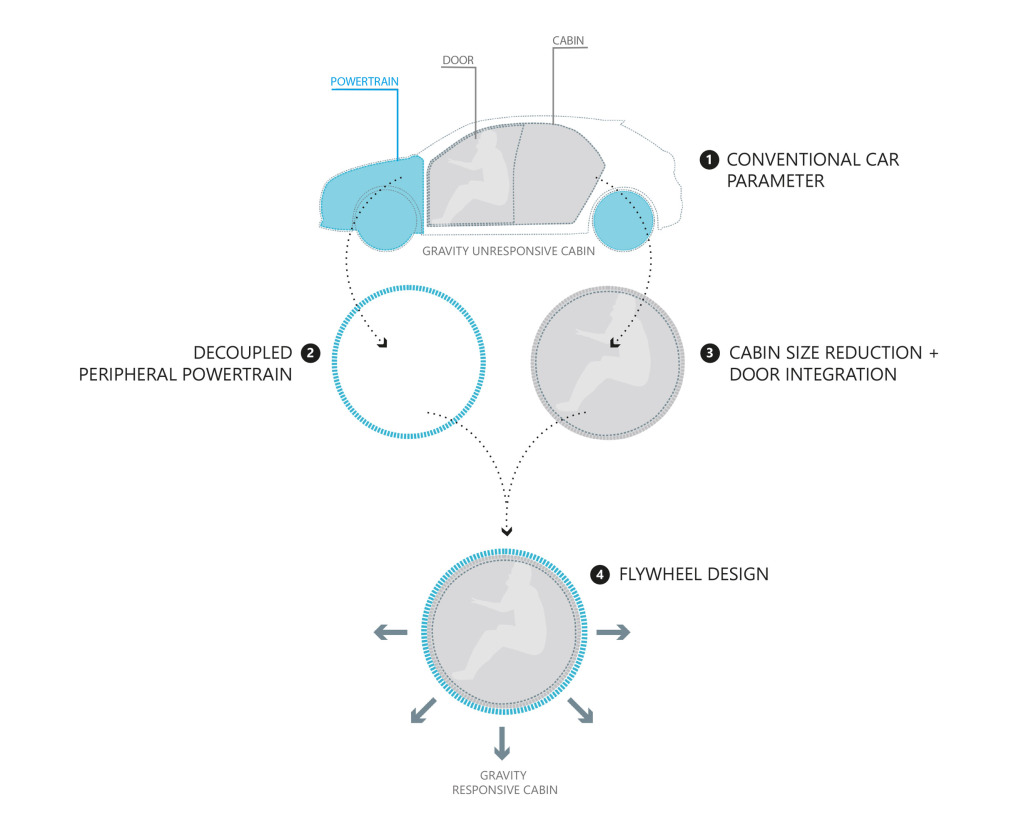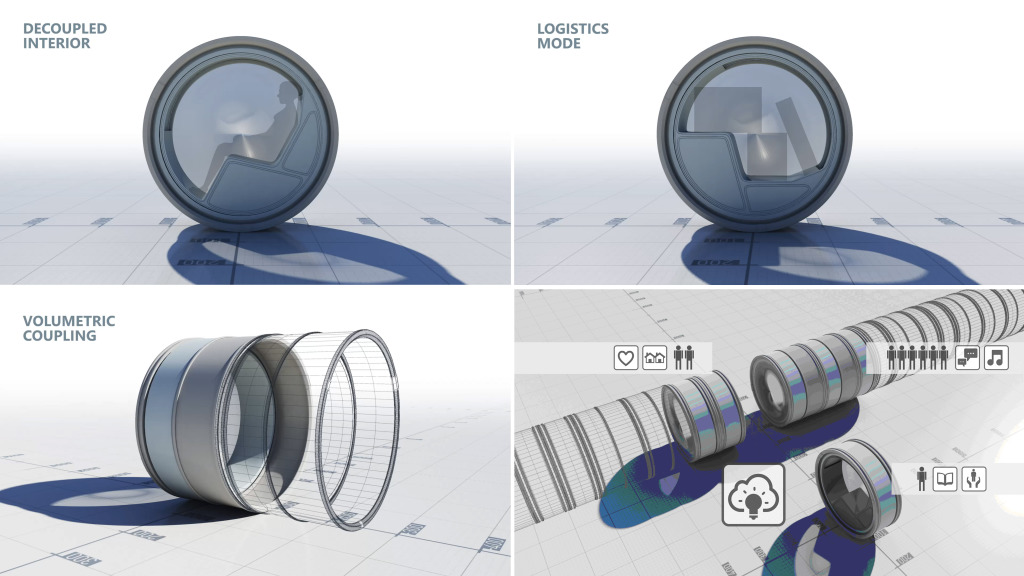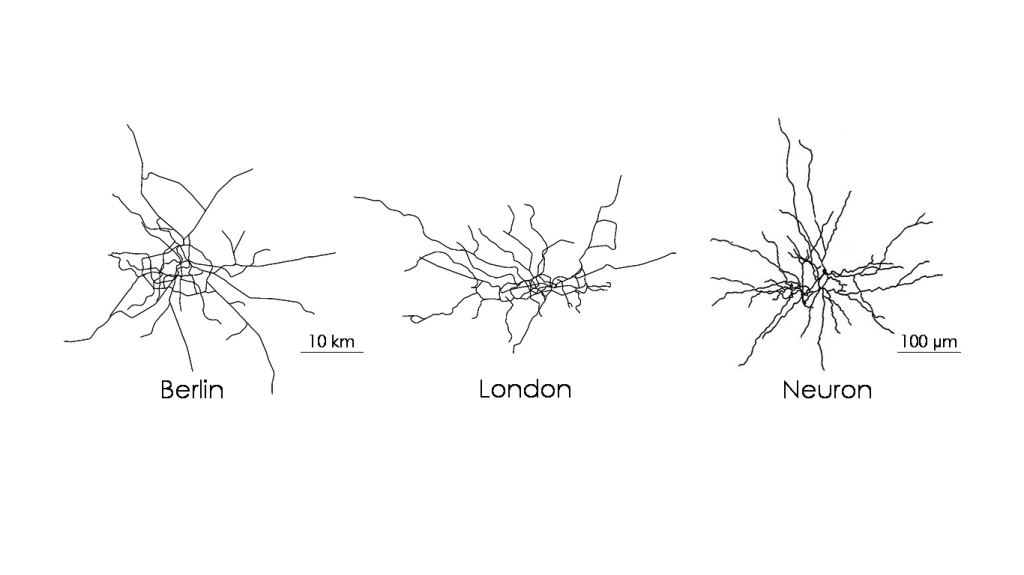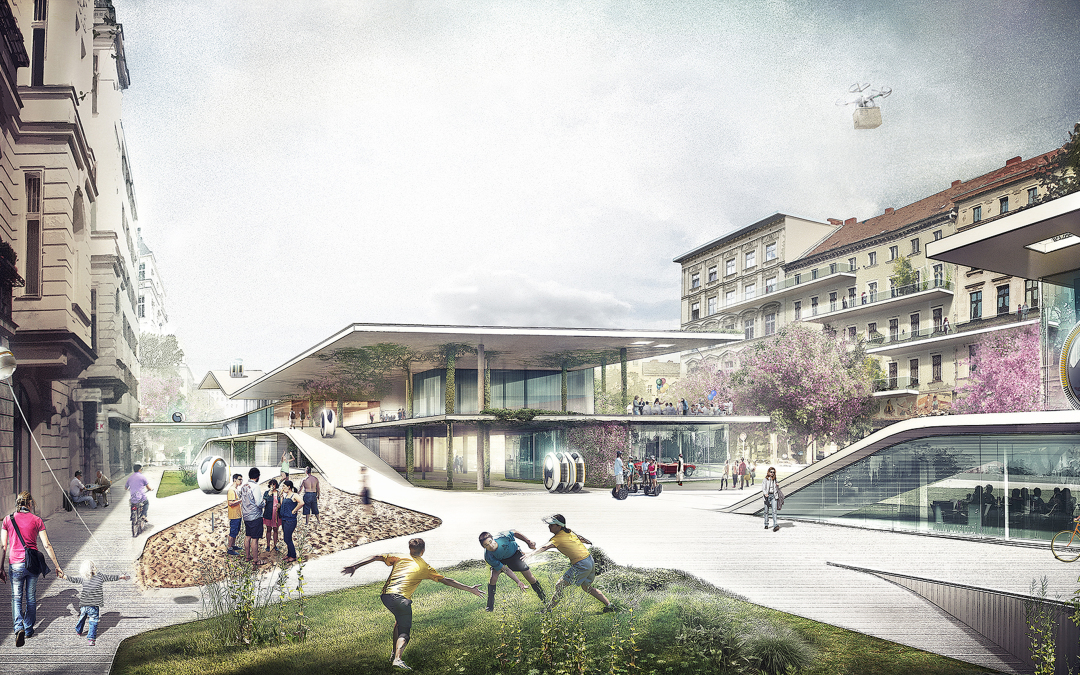All images courtesy of Audi Urban Future Initiative | Team Berlin
By Arndt Pechstein
Our cities are constantly growing and an ever-rising number of people live on a very small fraction of the world’s surface area. By 2050, about 70% of the world’s population is expected to live in urban areas. Half of the population of Asia alone is predicted to live in cities by 2020. Over 60% of the land projected to become urban by 2030 remains yet to be built. Mobility no longer remains an optional luxury for an elite but has transformed into a non-negotiable to participate in society. Consequently, smart mobility solutions are gaining importance. How do we tackle such a challenge of global dimension? How do we serve people’s needs for mobility while simultaneously sacrificing neither biodiversity and environmental values nor human health and well-being?
“The light bulb was not invented by improving the candle.”
Reinventing the wheel
Despite our pride of having invented the wheel (which is, by the way, not entirely true, given that the golden wheel spider has been using wheel motion for millions of years before us), humans are not the only species tackling mobility challenges. In fact, mobility is an inherent phenomenon shared by all living systems. Everything alive moves, from cells to organisms to entire ecosystems. Over billions of years, organisms and systems have evolved to be remarkably adaptive to their surroundings with regard to transport, mobility, and logistics.
“Everything alive moves, from cells to organisms to entire ecosystems.”
Such design stance – looking at living systems – provided the basis for a mobility concept that my team and I developed with architect Max Schwitalla and transit expert Dr. Paul Friedli within the Audi Urban Future Initiative. Using biomimicry – a discipline that abstracts biological design principles and applies them to human problem solving – to understand how living organisms and cells organize and realize transport opened up new ways of thinking and led us to question the typology of urban vehicles and infrastructure. The design we developed – called the Flywheel – transforms urban transport systems into a dynamic three- dimensional mobility landscape. Leveraging existing resources, it combines the qualities of public and private transport and generates a hybrid solution, increasing efficiency and user experience.
Analyzing the status quo
Current urban mobility is characterized by countless (mostly accepted or ignored) inefficiencies: traffic jams, noise, hazards, pollution, waiting times, standing resources. The utilization rate of a car is below 5%; 95% of their lifetime cars are parked, consuming valuable urban space. Up to 70% of city space not occupied by buildings is reserved for cars. In Berlin, up to one third of the traffic in the city center during rush hour is caused by people searching for a parking lot. The relation of mobility to urban space and resources in the modern city has failed in all aspects of sustainability. Any biological system running at such disastrous rate would collapse within no time. We wouldn’t accept such lousy stats in our companies, either. Yet, we seem to be blind on a systems level. Why?
“The relation of mobility to urban space and resources in the modern city has failed in all aspects of sustainability.”
Shifting paradigms: function instead of convention
To achieve a real breakthrough in urban mobility we have to rethink urban traffic and the underlying functions it serves. Any designer knows that it is not about the object but about the jobs-to-be-done. Only such a function-oriented mindset will lead us to entirely novel solutions as opposed to trying to pimp mediocre existing ones. The light bulb was not invented by improving the candle. Making a bad solution more efficient doesn’t make it good. Employing a combined methodology of biomimicry, user-centered design thinking and system dynamics, we designed a mobility solution offering a compromise between the convenience and status of personal transport and the civic benefits of public transport. Blurring the boundaries between those modes, our team aimed at combining resource conservation, user needs, and city development.
“Only such a function-oriented mindset will lead us to entirely novel solutions as opposed to trying to pimp mediocre existing ones.”
Modular and emergent: 1+1=3
After more than 100 years of automotive history, the typology of our cars has barely changed: four wheels, a passenger cockpit, four seats, four doors. Yet, this form has undoubtedly become obsolete in today’s metropolitan regions. Nature fits form to function. Overdesign is avoided. Looking at a car, it is obvious that aerodynamics are negligible at speeds around 50-60 km/h. We suggest to radically redefine the typology of urban vehicles and to decouple the functional fixedness of the power train as well as the passenger capsule just like the molecular motors in all our body cells do. In our bodies, “cargo” is routinely transported by motor proteins that are specific to certain cellular roads (microtubules). Switching cellular “road” systems is facilitated by changing from one prime mover to another, thus decoupling two separate functions. Transferring this principle to urban transport led us to functionally and morphologically disintegrate and decouple the car as we know it and to come up with a modular design.

Transport routes within body cells. Motor proteins (kinesins) transport cellular cargo (e.g. vesicles) across the cellular road system consists among other components of microtubules.
Such vehicles, which we dubbed the “Flywheels“, will be able to accommodate up to two passengers in their single mode and merge to longer “trains”, allowing for the transport of any number of people sharing a common destination, if desired. This design strategy capitalizes on another important biological design principle: modularity. Structural composition out of modular and nested sub-units allows for scalability, appropriate resource allocation, and robustness and resilience of the system.

Inspired by cellular transport mechanisms, we functionally and morphologically disintegrated and decoupled the car as we know it to form a modular, integrated design.

One of several Flywheel designs proposed by the Audi designers. This shows, that such system allows equally well for aesthetics and customization.
This design also utilizes another systemic concept from nature: emergence, the generation of more than the mere sum of its individual parts. Imagine the wall of a vehicle being transformed into a door, and after coupling with another vehicle it becomes a wall again in the train that is being formed. The original two-seater becomes more than twice as big. Instead of 2 + 2 = 4, there is suddenly space for 6 passengers. During night time, unused vehicles could potentially be used for cargo transport making them multi-functional and increasing their utilization rate even further.

Various functions of the Flywheel. The mobile interior allows for multifunctionality thus combing transport of people and goods. The coupling of subunits to form larger assemblies not only leads to a more efficient use of the resource but also creates new social and economic opportunities.
And there are more concepts nature provides: does a car have to consist of rigid materials or can we use flexible membranes and pliable elements in the future that allow for novel functions, appearance, and behavior? Biological examples of this can be found abundantly. The cells regulating transpiration and gas exchange in plants (stomata), for example, have diverse shapes depending on water content. The sea raft (Velella), a marine creature, uses flexible structures in order to be driven by the wind. Can we employ similar strategies in order to equip our cars with new looks and functions?
Hybrid mobility landscape: Hacking infrastructures
Current mobility systems in cities are two-dimensional and dominated by two mutually exclusive systems: public versus individual transport. We envision future city mobility to remove that division and the competitive behavior witnessed on our streets. Our approach breaks the tradition of the car being individual by imperative. We propose an evolutionary step of shared use of existing infrastructures. “Hacking” the current mobility landscape by using subway tunnels as fast underground links not only allows for a better use of built structures but also significantly reduces car traffic on the surface, therefore freeing valuable urban space for other uses. This creates an entirely new mobility and innovation platform allowing for the emergence of novel transport technologies, typologies, business models, and importantly social synergies.

Destination control algorithms allow for joint rides utilizing existing infrastructures such as subway tunnels. This frees valuable urban space while the first and last mile will remain on the surface.
Just in time: From competitive to collaborative, agent-based mobility on demand
Looking at natural systems, it is obvious that all components in healthy ecosystems are interconnected, operate collaboratively, and without central organization. The Flywheel concept constitutes a system that increases the utilization rate of urban vehicles and infrastructure and allows for an individualization of use. By employing destination control algorithms that are operational in elevators worldwide, the collective execution of individual needs will improve the performance of the whole system. The system individualizes urban mobility whenever needed while merging traffic units to larger entities when sharing common routes. A paradigm shift of that kind – moving from object to system – was successfully used by elevator companies introducing vertical transport logistics based on mathematical destination control algorithms. To date, elevators are the only vehicle of the urban mobility chain serving as a collective hybrid of individual and public transport.
Further, the Flywheel concept has advantages beyond mere efficiency. As a collective transportation system it constitutes a social enabler and builds on collaborative relationships. By sharing the same destination, the chances to meet your neighbor on the way are much greater. Moreover, the system could become an open innovation platform for the sharing economy.
“We envision biomimicry to be a societal and economic game changer, turning what is unexplored today into an ecosystem of vibrant, sustainable innovation.”
Novel urban morphologies
By defining the future aspects of a symbiotic relation of mobility, infrastructure, architecture, and people it creates novel urban morphologies and thus shapes a new experience of urban space. Based on individual destination control and autonomous driving, the system is transforming the static station-based concept of public transport into a dynamic traffic landscape.

City public transport networks and the nerve cells within our brains show remarkable similarities despite their tremendous differences in scales. What can we learn from the highly efficient transport with in our neurons?
Driven by the prospects of disruptive innovation, biomimicry remains a magnet for solving design challenges in novel ways. By forging a positive instead of an adversarial relationship between technology, business, and the environment, we envision biomimicry to be a societal and economic game changer, turning what is unexplored today into an ecosystem of vibrant, sustainable innovation.
About the author:
Dr. Arndt Pechstein is founding partner of the Berlin-based innovation agency phi360 and founder & director of the Biomimicry Germany Think-Tank. Arndt holds a PhD degree in Neuroscience & Biochemistry and a diploma in Biotechnology. As an expert in biomimicry, design thinking, and sustainable development, he runs innovation & co-creation workshops and advises companies & organizations on human-centered innovation and strategic foresight. He teaches students in sustainability and cross-disciplinary problem-solving and is a coach for design thinking at the Hasso-Plattner Institute (D-School). For his work, Arndt received the German Innovation Award in 2014 and the German Sustainability Award in 2015. He authored several articles about responsible innovation, including a chapter about biomimicry as a tool to assess entrepreneurial sustainability and has been featured by national and international media.

